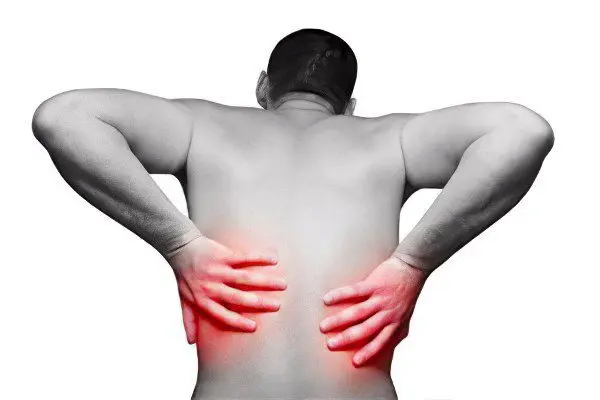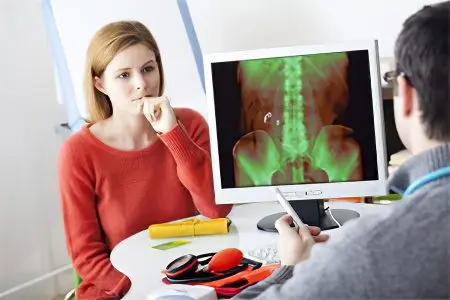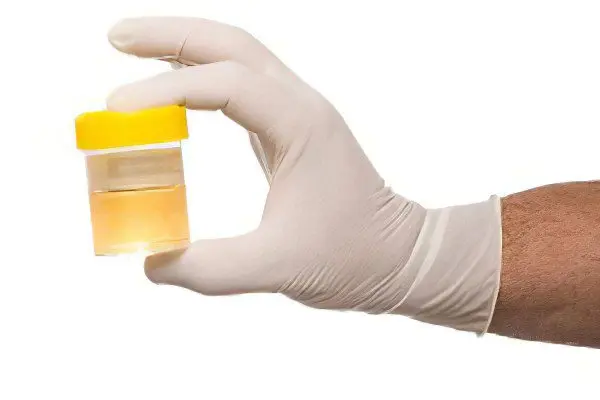Contents
Nephrolithiasis is a kidney disease. The term is derived from the Greek words “nephros” – kidney, “lithos” – stone. The disease most often makes itself felt by renal colic – the most obvious symptom for diagnosis and sensitive to the patient. Nephrolithiasis is caused by the formation of stones in the renal pelvis and calyces. This pathology in varying degrees occurs in 7 out of 10 people. Sooner or later, they will be faced with the need to receive medical assistance to get rid of severe pain and fear of the unknown.
Symptoms of nephrolithiasis

The first symptoms of the disease are acute pain on the side of the abdomen and in the lower back, which penetrates the person so strongly and suddenly that the doctor has to use narcotic painkillers to relieve it. The patient cannot alleviate his situation, he takes various postures, from which it does not become any easier. The pain radiates to the genitals, thighs, groin and pubis.
Additional symptoms of nephrolithiasis:
Bloating;
Nausea and vomiting;
Frequent urination.
These symptoms are caused by a stone that has started moving out of the kidney and stuck in the ureter. Small stones are more likely to cause intense pain than stones of impressive size. The movement of the stone is provoked by driving on a shaky road, physical activity.
If a large coral-shaped stone began to move, a dull pain of an unsharp nature is felt. Pain is caused by the fact that the stone got in the way of the flow of urine.
The nature of sensations makes it possible to find out the location of the stone, its size and even composition. After an attack of colic, some of the stones come out without any additional manipulations along with urine. If an admixture of blood is observed in the urine, it means that the stone on its way damaged the mucous membrane of the urinary tract. Oxalates almost always have sharp edges and injure the ureters. Phosphates are conglomerates with a smooth surface that cause less damage.
The location of the stone in the ureter or in the renal pelvis responds with acute pain in the groin, in the lower part of the ureter – the pain radiates to the genitals.
Almost always, patients with nephrolithiasis suffer from pyelonephritis. Its main symptoms are:
arterial hypertension;
Pyuria is a purulent discharge in the urine.
Approximately 13% of patients with nephrolithiasis have moderate pain, it is tolerated quite easily, and small stones go unnoticed. Possible complications of this variant of the development of the disease are kidney infection. A bacterial infection eventually turns into hydronephrosis – persistent atrophy of the tissues of the calyx and renal pelvis.
Complications of the chronic form of the disease:
symptomatic hypertension;
Chronic renal failure.
Causes of nephrolithiasis

The main cause of urolithiasis is urination disorders, changes in the composition of urine. Regions that are endemic in terms of the frequency of detection of nephrolithiasis have nutritional characteristics and a composition of drinking water that is different from the norm.
Additional causes of nephrolithiasis:
urinary tract infection;
Narrowing of the ureter;
Inflection of the ureter.
Possible core of future education:
Leukocytes;
blood clot;
dead epithelium;
colonies of microorganisms.
Staying in a hot climate with dry air leads to the development of the disease faster than being in a region with cold and humid weather conditions.
Varieties of stones – provoking factors:
Urates – consist of salts of uric acid, are more often formed in those who prefer meat to other products;
Phosphates – consist of calcium salts of phosphoric acid, are found in vegetarians and in those who prefer dairy and vegetable products with a high calcium content, mainly milk;
Cystine stones – associated with liver disorders;
oxalate stones;
xanthine stones;
Carbonate stones;
Mixed stones – contain salts of different composition;
Soft stones are elastic formations consisting of protein: fibrin, amyloid, bacteria.
The stones vary in size from a grain of sand to an egg-sized formation. Urate and phosphate grow slowly and rarely grow larger than a nut. Phosphates and carbonates grow rapidly, creating coral-like rocks of great volume. They fill the entire pelvis of the kidney or its calyx, creating an impression of this organ.
If the urologist or nephrologist knows the composition of the stone, they can more accurately prescribe treatment, convey to the patient the importance of careful treatment and implementation of recommendations.
Diagnosis of nephrolithiasis

Since the patient suffers unbearable pain during renal colic, he will definitely seek the advice of a doctor. The nephrologist will conduct a mandatory diagnosis, including laboratory and instrumental methods of examination.
Diagnosis of nephrolithiasis:
The study of anamnesis.
Analysis of the symptoms of pathology according to the patient.
Analysis of urine.
Radiodiagnosis of the urinary tract is the main method for detecting hard conglomerates, it is not suitable for detecting soft stones that transmit X-rays.
Ultrasound of the kidneys and ureters – allows you to detect formations of at least 3 mm in size, during the study there is a risk of taking a large stone with sharp edges for several small stones, and a coral formation for several large stones.
Excretory urography – used to clarify the location of stones, the condition of all parts of the urinary system and their functioning.
Computed tomography is the most accurate diagnostic method.
Lithotripsy – surgery for nephrolithiasis

Do not refuse surgical treatment if there are good reasons for this. Lithotripsy is the crushing of stones with a special apparatus that directs a shock wave to a point on the body determined by a doctor. The patient is in the water in a semi-sitting position.
Indications for surgery for nephrolithiasis:
The frequency of attacks of renal colic;
Complications of pyelonephritis in history;
A significant size of stones with a narrowed ureter;
Absence of one kidney;
Violation of the functioning of the kidney after an attack within a week;
No stone shift within 3 months.
It is possible that having indications will lead to the need for a serious and traumatic surgical operation.
Litholysis – dissolution of stones in nephrolithiasis

For effective dissolution of stones, it is desirable that the pH of the urine be from 6,2 to 6,8. Preparing for the course of litholysis, the patient measures the pH of the urine for a week with a special indicator paper, a street graph for presenting it to the doctor. Based on these measurements, the nephrologist determines the doses of drugs and the timing of their use. It is advisable to drink alkaline mineral water of Borjomi, Truskavets, Essentuki instead of drinks during preparation for litholysis of urate stones.
Preparations for the preparation of a mixture that dissolves urates:
Lemon acid;
Sodium Citrate;
Potassium citrate;
magnesium citrate;
Soleran;
Blemaren;
Uralit-y;
magnesium citrate;
Magurlit (pyridoxine hydrochloride).
Prepaart Trilon B is used to dissolve phosphates. In preparation for the litholysis of phosphate stones, it is recommended to take the mineral waters of Zheleznovodsk, Kislovodsk, Truskavets.
Pain reliever for nephrolithiasis

Acute pain during an attack of renal colic is stopped with antispasmodics and drugs with analgesic properties (1-2 tablets):
you go
Maxigan,
Trigan,
Fortral.
Knowing for sure that the cause of renal colic is urolithiasis, you can put a hot heating pad on your lower back, or take a bath with a water temperature of +45 ° C. If there are doubts about the source of pain, thermal procedures should not be taken in order to avoid serious consequences. Such colic can be a manifestation of other diseases in which the effect of heat is dangerous. If the above remedies do not help, the emergency doctor will relieve the pain by administering a strong painkiller.
Diet for nephrolithiasis

With an increased content of uric acid salts and its crystals in the urine, it is necessary to limit meat and fish products in the diet to 150 g per day. The method of cooking meat and fish dishes is boiling in water or steamed.
With an increased risk of phosphate formation, dairy products, egg yolks, and potatoes are excluded from the diet.
The formation of oxalates is a reason to remove pepper, sorrel, spinach, lettuce from the menu, and limit milk, meat, carrots and potatoes.
For the prevention of recurrence of urolithiasis after surgery or after an independent exit of the stone, medications are used:
cisternal,
Rovatex,
madder extract,
Phytopreparations with antispasmodic action.
These funds will improve blood circulation and lymph flow in the kidney, salt metabolism in the blood. It is advisable to visit a doctor regularly for specific recommendations and to take a urine test.
[Video] Dr. Berg – KIDNEY STONES: How to get rid of?









